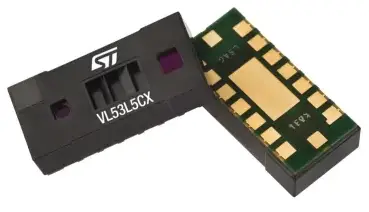Answer

Sep 22, 2025 - 11:28 AM
To ensure proper thermal management for the ST VL53L8CX Ranging Sensor Module, follow these guidelines based on the user manual:
1. **Calculate Thermal Resistance:** Use the formula θ = ΔT/P to calculate the thermal resistance, where ΔT is the rise in junction temperature and P is the power dissipation. The maximum permitted junction temperature is 110°C, and the die thermal resistance is 43°C/W.
2. **Thermal Resistance of PCB or Flex:** Calculate the thermal resistance of the PCB or flex to ensure the maximum junction temperature is not exceeded. For a power dissipation of 0.320 W and device operation at 85°C, the maximum thermal resistance of the PCB or flex should be 35°C/W.
3. **Layout and Thermal Guidelines:** When designing the module PCB or flex, consider the following guidelines:
- Maximize copper cover on the PCB for better thermal conductivity.
- Use the recommended thermal pad and solder paste layout as shown in the manual.
- Ensure wide tracking for power and ground signals and connect them to adjacent power planes.
- Add heat sinking to distribute heat away from the device.
- Avoid placing the module next to other hot components.
- Put the device in a low power state when not in use to reduce heat generation.
By following these thermal management guidelines and layout recommendations, you can optimize the performance of the ST VL53L8CX Ranging Sensor Module, prevent overheating, and ensure reliable operation.
 User Manual Q&A
User Manual Q&A





Add New Comment